Attention! For serious damage (leak from the cylinder, seizure of the piston, etc.) the caliper is recommended to be replaced.
1. Loosen wheel nuts, raise vehicle and place on stands. Remove wheels. Remove brake caliper from disc (see the description of replacing disc brake pads), without disconnecting the hose.
2. Designate the relative position of the fitting of the brake hose and the caliper and unscrew the bolt that secures the annular fitting of the hose to the caliper.
3. Remove the caliper and copper sealing washers of the ring fitting. Clean the caliper with a special fluid.
4. Wrap the caliper with a swab of rags, or place a bar under the cylinder, remove the piston from the cylinder with compressed air, feeding it into the hole for the hose fitting (see photo).
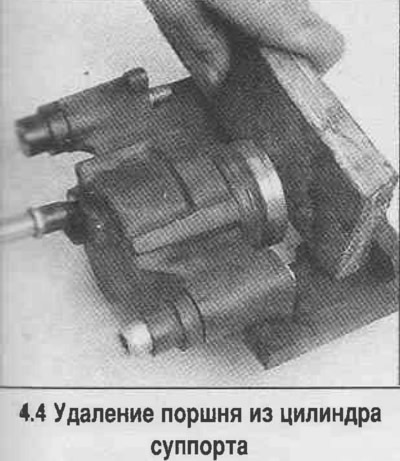
5. Inspect the surface of the piston, the presence of scratches, scoring, wear of the coating on it. If surface defects are found, replace the piston. Check the condition of the caliper cylinder. Spots or small traces of corrosion are allowed, which are removed by manual polishing.
6. If parts are in good condition, replace piston seal and dust cover (See photo from repair kit.
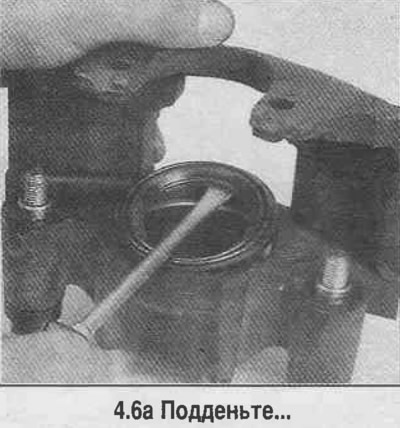
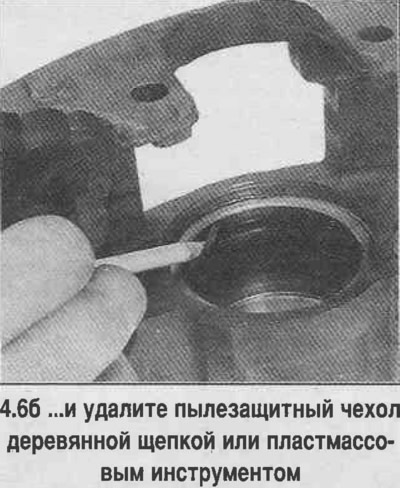
7. Clean the piston and cylinder with brake cleaner, clean brake fluid or denatured alcohol.
8. Lubricate the new piston seals with clean brake fluid and place the seal by hand into the cylinder groove (see photo).
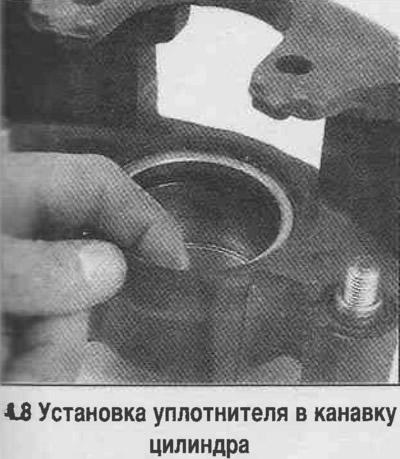
9. Install a new dust cover into the groove on the edge of the piston. Dip the piston in clean brake fluid and insert straight into the cylinder. Press the piston to the base of the cylinder (see photo).
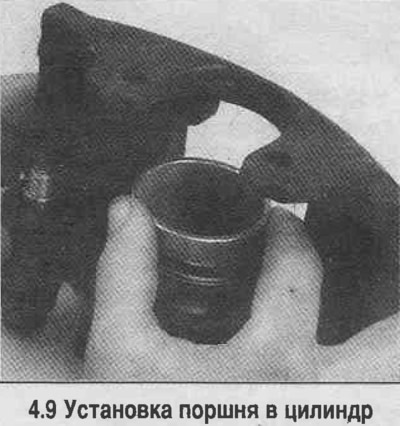
10. Install the boot into the caliper (see photo).
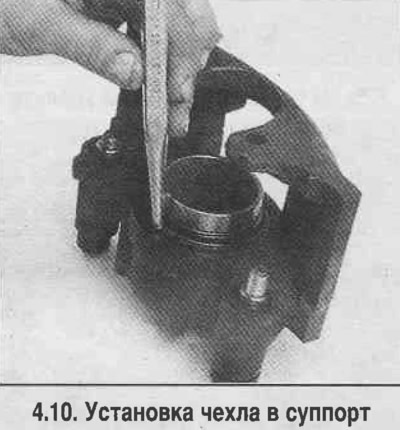
11. Attach the brake hose to the caliper, replacing the copper washers, align the fitting with the mark made before disassembly, make sure that the hose is installed along the original route.
12. Establish a support upside-down.
